This website uses cookies so that we can provide you with the best user experience possible. Cookie information is stored in your browser and performs functions such as recognising you when you return to our website and helping our team to understand which sections of the website you find most interesting and useful. You can view our complete Privacy Policy here.
Fact Friday
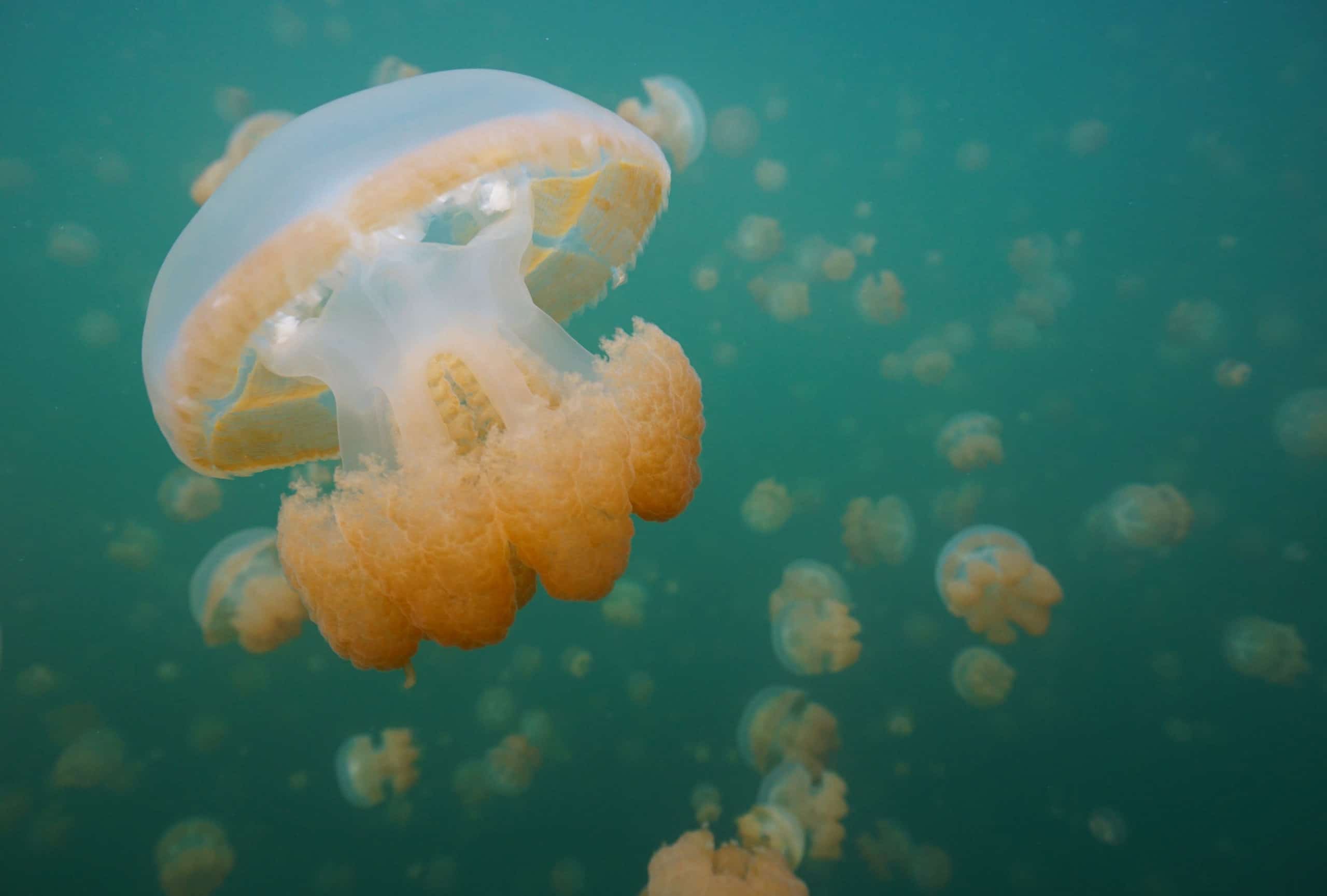
These are no ordinary jellyfish. The golden jellyfish in Palau’s Jellyfish Lake move together in a daily migration that follows the sun from one side of this marine lake to the other. Just like coral, these jellyfish have symbiotic algae, called zooxanthellae, living in their tissues. The zooxanthellae photosynthesize and then share nutrients with the jellyfish, which it needs to survive. Once the sun goes down, the jellyfish migrate back to the other side of the lake where they begin the cycle all over again the next morning.
Photo Credit: ©ILCP/Keith Ellenbogen
Background Information
What does a scientist look like?
Quick, when you think of a scientist, what do you imagine?
Did you think of something like this, from a study of what people think scientists look like? That study found most people think of a scientist as being a man wearing a white lab coat and glasses with crazy hair, holding something like a beaker or a book while standing in a laboratory.
Well, that definitely does not describe marine scientists! (At least, not all of them.) Marine scientists can be experts in different disciplines: physics, biology, conservation… They can work in different locations: laboratory, office, underwater… They use many different tools: SCUBA gear, measuring tapes, boats…
Click through this unit to meet some of our scientists and learn about other notable marine scientists.
Samantha Clements
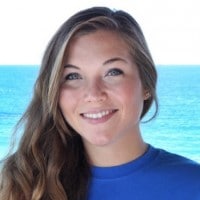
M.S. in Biology
Scripps Institution of Oceanography
What is the one thing you wish you had known back in high school?
I’ve always been a little shy and hesitant to talk to people who were older or more experienced than myself (what could I possibly say to them and why would they want to talk to ME?). I wish I had known the importance of networking, meeting people, and building professional relationships in high school. It’s truly one of the most important things for creating a career path. I wish I had started earlier!
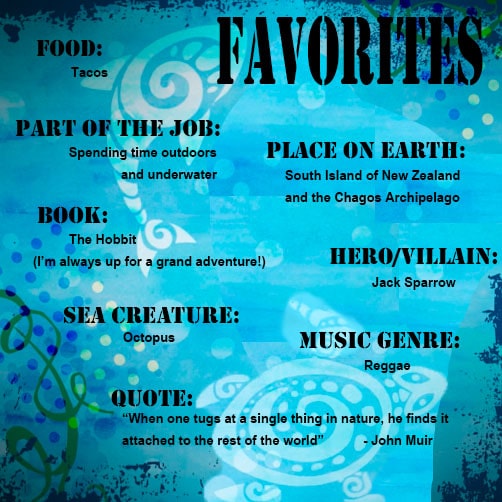
Other than science, how do you spend your time?
I have a lot of hobbies outside of science! I love being outdoors, so camping/backpacking and traveling are high on my list. I also enjoy yoga (I work part-time at a yoga studio), beach volleyball, painting, cooking, and teaching.
What is the hardest part of your job?
Hours and hours and HOURS sitting at a computer! When I’m not outdoors diving and collecting data, I’m sitting at a computer entering data, analyzing photos, writing papers, etc. All that sitting at a computer gets old fast.
Describe the most surprising event you have encountered in your career.
I was once approached by an endangered Hawaiian monk seal while collecting samples for my research in Maui. She was a juvenile, but already much larger than me, and she seemed very curious and playful. I had never been in the water so close to a marine mammal before, so it definitely caught me off guard!
How does your research impact the average person?
By contributing to a larger knowledge base about the status and functions of coral reefs, I’m helping to inform outreach and policies that teach the average person about the importance of reefs and how to protect them for future generations.
Click here to see more information about Samantha Clements.
Alvariño, Clark, Cousteau, Damanaki
Angeles Alvariño
(1916-2005) Alvariño was born in Spain and studied a myriad of subjects, writing dissertations on topics from Don Quixote to social insects. She discovered 22 new species of zooplankton and contributed to over a hundred scientific publications during her career. Most of her work was on three groups of zooplankton: siphonophores, chaetognaths, and medusae.
Eugenie Clark
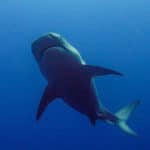 (1922-2015) Clark is also known as “the shark lady” since she worked to change the public fear of sharks and added vast amounts to the scientific knowledge of these animals. She made TV specials for the National Geographic Society, as well as writing 12 stories for the magazine (just a few of her almost 200 publications). Clark enhanced her research with SCUBA and submersibles. In 1955, she founded what is now known as the Mote Marine Laboratory, in Sarasota, FL.
(1922-2015) Clark is also known as “the shark lady” since she worked to change the public fear of sharks and added vast amounts to the scientific knowledge of these animals. She made TV specials for the National Geographic Society, as well as writing 12 stories for the magazine (just a few of her almost 200 publications). Clark enhanced her research with SCUBA and submersibles. In 1955, she founded what is now known as the Mote Marine Laboratory, in Sarasota, FL.
Jacques-Yves Cousteau
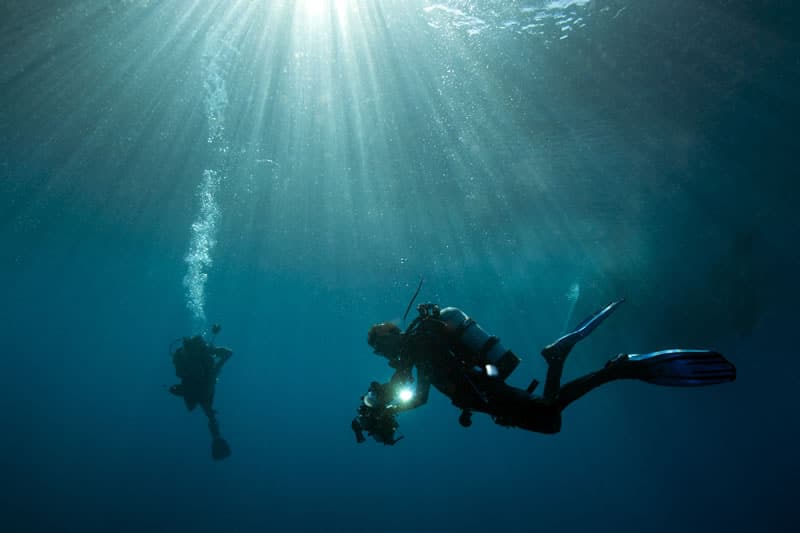 (1910-1997) Cousteau co-invented the first aqua-lung and helped develop a waterproof camera that could handle the pressure found in deep water. This allowed him to introduce the world to underwater wonders with his documentaries and his TV show, The Undersea World of Jacques Cousteau. He also wrote many books. He founded the Cousteau Society in 1973 to bring more awareness to the plight of ocean ecosystems.
(1910-1997) Cousteau co-invented the first aqua-lung and helped develop a waterproof camera that could handle the pressure found in deep water. This allowed him to introduce the world to underwater wonders with his documentaries and his TV show, The Undersea World of Jacques Cousteau. He also wrote many books. He founded the Cousteau Society in 1973 to bring more awareness to the plight of ocean ecosystems.
Maria Damanaki
(1952- ) Damanaki has pioneered the “Blue Growth” agenda, which uses principles of conservation to keep marine and coastal growth sustainable. As European Union Commissioner for Maritime Affairs and Fisheries, she brought the number of sustainable fisheries up from five to 27. She holds a Master of Science in chemical engineering and has spent over 30 years of her life in public service throughout Europe, but mostly in Greece. She has written four books on various topics. Damanaki currently works for the Nature Conservancy.
Alexandra Dempsey
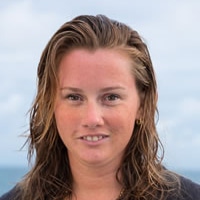
Coral Reef Ecologist
Khaled bin Sultan Living Oceans Foundation
What is the one thing you wish you had known back in high school?
Try to learn as much as you can about the things that interest you.
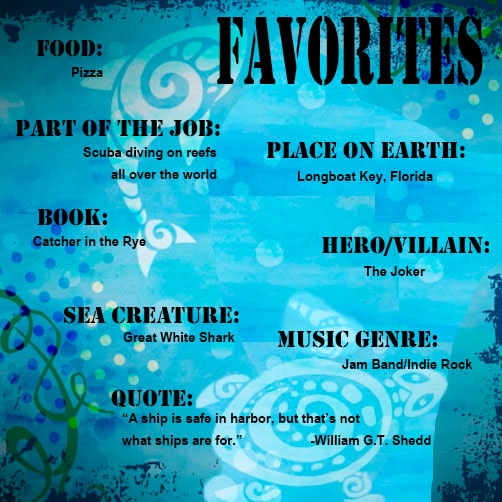
Other than science, how do you spend your time?
Other than science, I enjoy sports, music, and cooking/eating new and exciting foods.
What is the hardest part of your job?
The hardest part of my job is data management and organizing. After all the field data is collected you have to be meticulous in organizing and compiling all the names and numbers of organisms.
Describe the most surprising event you have encountered in your career.
I would have to say witnessing the devastation crown-of-thorns can cause on a reef system has been a surprising and incredible event. I have witnessed several crown-of-thorns starfish outbreaks through the Indo-Pacific region. The devastation that these coral-eating starfish can cause to a reef system is astonishing. And they leave a graveyard of coral skeletons in their path.
How does your research impact the average person?
Understanding coral reefs, one of the most productive ecosystems on the planet, is important because they support high biodiversity and are a massive asset to humankind economically and culturally.
Click here to see more information about Alexandra Dempsey.
Earle, Lubchenco, Paine, Pauly
Sylvia Earle
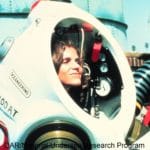 (1935- ) Earle is known as “Her Deepness” to many throughout the world, thanks to The New Yorker dubbing her with the honorific after she set a record for walking solo at 1,250 feet (380 meters) deep in a JIM suit (a sort of personal submersible). She was the head of the first all-female team to live underwater. She is a former Chief Scientist of the National Oceanic and Atmospheric Administration (NOAA). She has written close to 200 scientific publications and holds over a hundred honors. Currently, she founded and leads Mission Blue to protect vital areas of the ocean. Learn more about and from her at TED.com.
(1935- ) Earle is known as “Her Deepness” to many throughout the world, thanks to The New Yorker dubbing her with the honorific after she set a record for walking solo at 1,250 feet (380 meters) deep in a JIM suit (a sort of personal submersible). She was the head of the first all-female team to live underwater. She is a former Chief Scientist of the National Oceanic and Atmospheric Administration (NOAA). She has written close to 200 scientific publications and holds over a hundred honors. Currently, she founded and leads Mission Blue to protect vital areas of the ocean. Learn more about and from her at TED.com.
Jane Lubchenco
(1947- ) Lubchenco is one of the most cited ecologists in the world, seen as an expert in tide pools. She has made contributions to science, government, and academia. While she did not get exposed to the marine world until she was already in college, once she did, she quickly aimed for graduate work in marine biology. In the 90s, she worked with her colleagues to publish credible information about human influences throughout the natural world. As Under Secretary of Commerce for Oceans and Atmosphere and NOAA Administrator (2009-2013), she focused on sustainable fisheries and the promotion of climate science. She currently teachers and advises at Oregon State University.
Bob Paine
(1933-2016 ) Paine introduced the concept of keystone species in the 1960s, and it has become fundamental to ecology and conservation biology. He was a researcher, professor, and mentor for four decades. He began investigating nature as a young boy and has never stopped, with most of his research being done in the Pacific Northwest.
Daniel Pauly
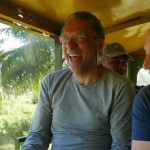 (1946- ) Pauly defied the constraints of his childhood, putting himself through school and becoming one of the world’s leading fisheries scientists, contributing to over 500 scientific publications, and mentoring the next generation of scientists on multiple continents and in multiple languages. He is currently working to estimate the size of the world’s actual fishery (see more about our upcoming film on his work and the app that might help) in an attempt to aid the fight for sustainable fishing. Learn more about and from him at TED.com.
(1946- ) Pauly defied the constraints of his childhood, putting himself through school and becoming one of the world’s leading fisheries scientists, contributing to over 500 scientific publications, and mentoring the next generation of scientists on multiple continents and in multiple languages. He is currently working to estimate the size of the world’s actual fishery (see more about our upcoming film on his work and the app that might help) in an attempt to aid the fight for sustainable fishing. Learn more about and from him at TED.com.
Sam Purkis
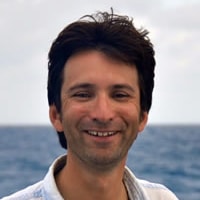
Professor
Halmos College of Natural Sciences and Oceanography
Nova Southeastern University
What is the one thing you wish you had known back in secondary school?
That it’s not about how many hours you work, it’s about achieving tangible results.
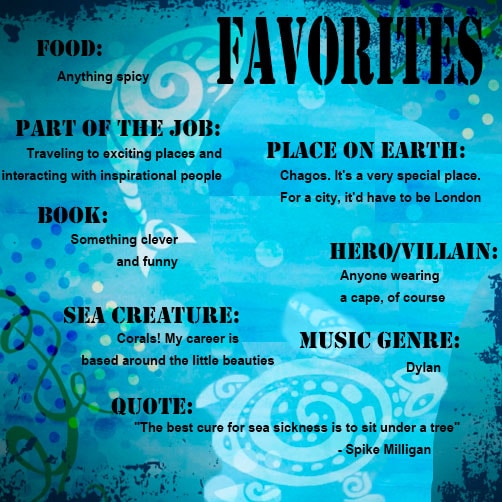
Other than science, how do you spend your time?
I’m co-founder and Chair of the Chagos Conservation Trust-US
(CCT-US), a 501(c)(3) charitable foundation incorporated in 2009 to engage in activities to protect the Chagos Archipelago coral atolls. As stated on our website, www.cctus.org, our mission is to promote conservation, science and education in relation to the archipelago.
What is the hardest part of your job?
Long-haul travel. I fly a lot and it’s wearing.
Describe the most surprising result you have encountered in your career.
That there’s mathematical predictability in the size of coral reefs that links coral patches of a few tens of meters in diameter up to the scale of entire archipelagos covering thousands of square kilometers. Very curious.
How does your research impact the average person?
I’m not sure that it does, yet, but hope it will soon. Because they’re submerged and hidden from casual view, the crisis that coral reefs are suffering is hardly apparent to the average person. Further, complicated technology is required to map coral reefs over the vast scales relevant to their management. For this reason, many nations have a poor understanding of the location, extent, and health of their reefs. A lack of this basic information blocks effective management; it’s impossible to be a good custodian of a natural resource if you don’t know where it is. The reef maps that we create from satellite through the Global Reef Expedition should assist reef managers in a very direct way. Armed with reliable reef maps, we can hope that managers will be able to direct legislation that will provide reefs with the high calibre of protection that they so badly require. It is through enabling enhanced and more nimble management that my research should impact the average person.
Click here to see more information about Sam Purkis.
Roughgarden, Trench, Turner, Veron
Joan Roughgarden
(1946- ) Roughgarden thinks her love of biology may have sprung from her youth spent in South East Asia where she was first exposed to the diversity of nature. As an expert in evolutionary ecology, she has contributed to approximately 200 scientific publications. While much of her time has been devoted to the Caribbean Anolis lizard, Roughgarden has conducted research in many ecosystems, including coral reefs and grasslands.
Robert Trench
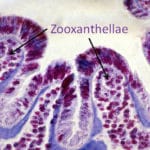 (1940- ) Trench is the world’s leading expert on the symbiotic relationship that can exist between plants and animals, especially between corals and zooxanthellae. His team discovered that some corals host specific strains of zooxanthellae. He was a professor for over 25 years, writing about a dozen papers and winning the Miescher-Ishida Prize. He retired in 2000, though he is still active in attempts to restore marine ecosystems.
(1940- ) Trench is the world’s leading expert on the symbiotic relationship that can exist between plants and animals, especially between corals and zooxanthellae. His team discovered that some corals host specific strains of zooxanthellae. He was a professor for over 25 years, writing about a dozen papers and winning the Miescher-Ishida Prize. He retired in 2000, though he is still active in attempts to restore marine ecosystems.
Ruth Turner
(1914-2000) Turner is known as the leading expert on shipworms, a mollusc related to clams that bores into wood, and so earned her the title “Lady Wormwood.” Starting as a teacher in a one-room schoolhouse, she was studying birds when she was introduced to molluscs. Her research allowed her to travel the world, write over 100 scientific publications, and appear in National Geographic specials. She was the first woman to take a turn in Alvin, a deep-sea submersible.
J.E.N. (Charlie) Veron
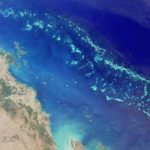 (1945- ) Veron both discovered and described nearly a third of all known coral species. He was the first scientist to focus his study on the Great Barrier Reef (GBR), in Australia. Over four decades, he broadened his reach to study the past and present state of coral reefs across the globe. With over seventy publications and numerous awards, he is considered to be the world authority on corals and coral reefs. He still dives on the GBR whenever possible and continues to advocate for the health of corals and recently co-founded Ocean Ark Alliance.
(1945- ) Veron both discovered and described nearly a third of all known coral species. He was the first scientist to focus his study on the Great Barrier Reef (GBR), in Australia. Over four decades, he broadened his reach to study the past and present state of coral reefs across the globe. With over seventy publications and numerous awards, he is considered to be the world authority on corals and coral reefs. He still dives on the GBR whenever possible and continues to advocate for the health of corals and recently co-founded Ocean Ark Alliance.
Philip Renaud
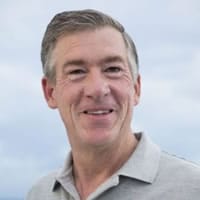
Executive Director
Khaled bin Sultan Living Oceans Foundation
What is the one thing you wish you had known back in high school?
That I should really have paid more attention in typing class! We spend so much time on computers these days – people who are fast keyboarders are the most productive.
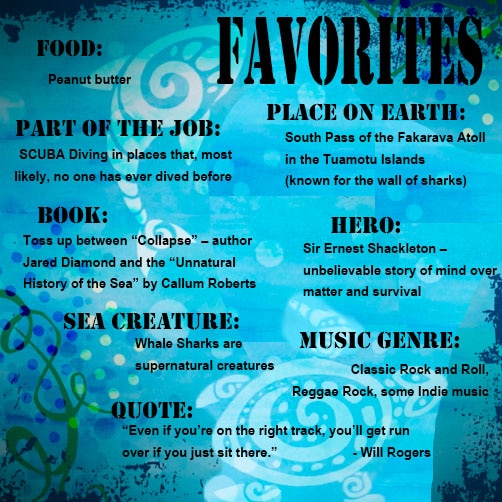
Other than science, how do you spend your time?
Mostly either fixing, cleaning, sailing, cruising, or just hanging out on my 35 ft Tartan sailboat named “Blown Aweigh.” Can you tell that I love to sail?
What is the hardest part of your job?
Strategizing about how to best position the Khaled bin Sultan Living Oceans Foundation to have the biggest impact on healing the oceans.
Describe the most surprising event you have encountered in your career.
I was the Meteorologist and Oceanographer for the nuclear powered Aircraft Carrier, USS Theodore Roosevelt. As such, I gave the ship’s Captain a clear and calm forecast for our transit through the Suez Canal. After we were well into the canal transit, I walked on the ship’s bridge to assume watch as Officer of the Deck. Much to my horror, I saw that there was fog as thick as pea soup! The Captain took great pleasure in giving me endless grief about that busted forecast!
How does your research impact the average person?
By translating our science through educational programs, social media, and film, we are having a measurable impact on raising the world’s ocean literacy level. We hope this will result in the average person making better informed decisions, such as respecting the coral reefs when snorkeling and diving, choosing sustainable fish to eat, and encouraging their elected representatives to pass legislation that conserves ocean life and health.
Click here to see more information about Philip Renaud.
More Scientists
Want to learn more about marine scientists? There are plenty more to meet on our Science Team page or check out these interviews from a few years ago:
Jeremy Kerr
Judy Lang
You can also check out the following TED speakers or search for the terms “ocean” or “marine” on the TED homepage.
Robert Ballard
Underwater archaeology
Asha de Vos
Blue whales
Jeremy Jackson
Marine environments
Kristen Marhaver
Coral ‘assisted reproduction’
Stephen Palumbi
Marine organisms
Carl Safina
Nature and human dignity
Enric Sala
Pristine marine environments
Edith Widder
Bioluminescence





